A Butlin’s in Somerset may not seem like the natural setting for a groundbreaking scientific discovery.
But researchers have now discovered the oldest forest on Earth hidden in the sandstone cliffs near the holiday resort.
Scientists from the University of Cambridge and Cardiff University have discovered the fossil remains of an ancient forest that once spread across Devon and Somerset.
This fossil forest is believed to date back 390 million years, surpassing the previous record holder in New York by more than four million years.
Lead author Professor Neil Davies of the University of Cambridge said: “People sometimes think that British rocks have been examined enough, but this shows that revisiting them can produce important new discoveries.”
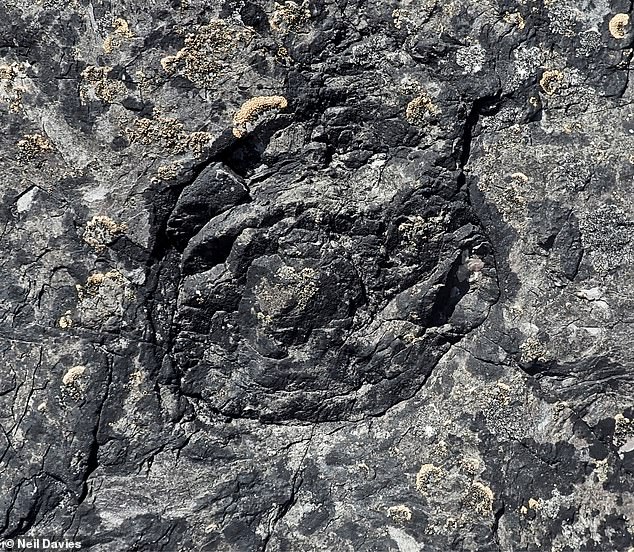
Scientists found fossilized remains of tree trunks (pictured). As this cross section of a trunk shows, these trees would have been hollow in the middle
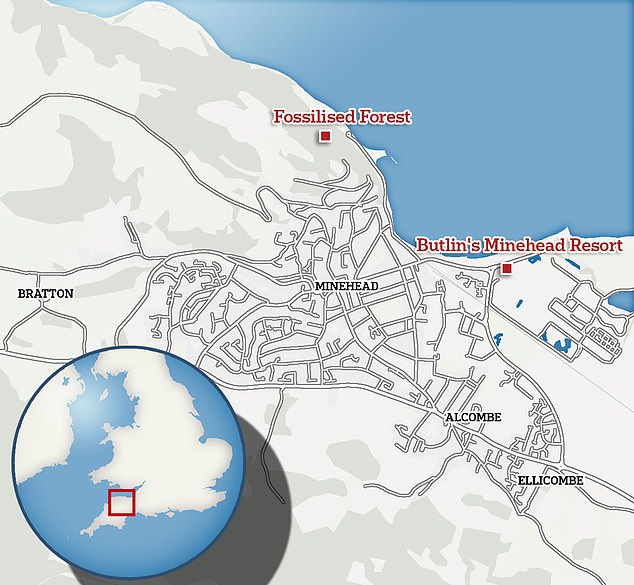

Scientists have discovered the oldest forest on Earth in an ancient sandstone formation near Minehead, Somerset, which is now home to a Butlin holiday resort.
In the study, researchers studied rocks from the ‘Hangman Sandstone Formation’, a 1.4 kilometer-thick band of rock from the Devonian period, stretching between 419 and 358 million years ago.
It was in this period that life began its first serious expansion onto land.
Until now it was believed that the cliffs on the south bank of the Bristol Channel did not contain plant fossils.
However, while climbing England’s highest cliffs, some of which can only be reached by boat, researchers discovered remains of tree trunks and twigs from an ancient forest.
These are the oldest plant fossils ever found in Britain, dating back more than 350 million years.
Before this discovery, the oldest known forest in the world was in Green County, about a two-hour drive north of New York City.
This forest grew about 385 million years ago and survived long enough to have been seen by dinosaurs.
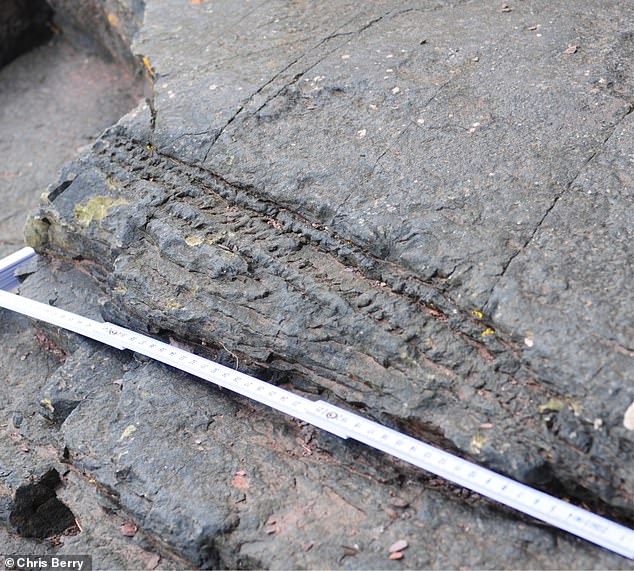

The fossils preserve fallen logs (pictured) in remarkable detail, showing the patterns that would have covered their bark.
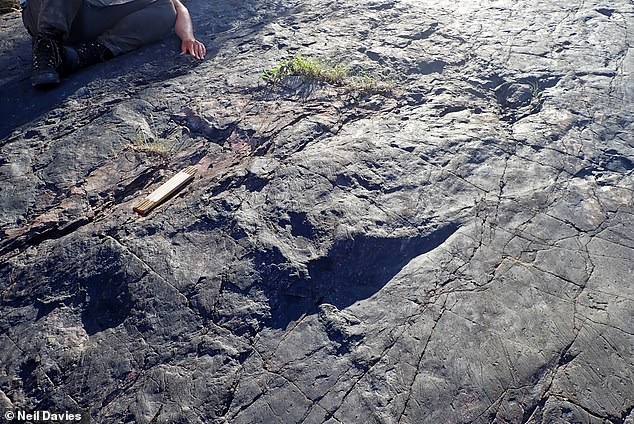

Here, scientists study the fossil of a large stump. Although not as large as their modern descendants, these ancient trees could grow between two and four meters tall.
However, the fossil trees found in Somerset would have looked nothing like the forests found today in nearby Exmoor National Park.
According to the researchers, these trees, called Calamophyton, would have looked a bit like today’s palm trees.
Unlike modern trees, they were thin and hollow in the center, while hundreds of twig-like structures grew on them instead of leaves.
Compared to a modern forest, they would also have been much shorter: the tallest would reach between two and four meters.
Professor Davies said: “It was quite a strange forest, not like any forest you would see today.”
“There were no undergrowth and no grass had appeared yet, but these densely packed trees dropped a lot of twigs, which had a big effect on the landscape.”
These fallen twigs would have provided homes for some early animals, and researchers even discovered fossilized footprints of one of these early invertebrates on the forest floor.
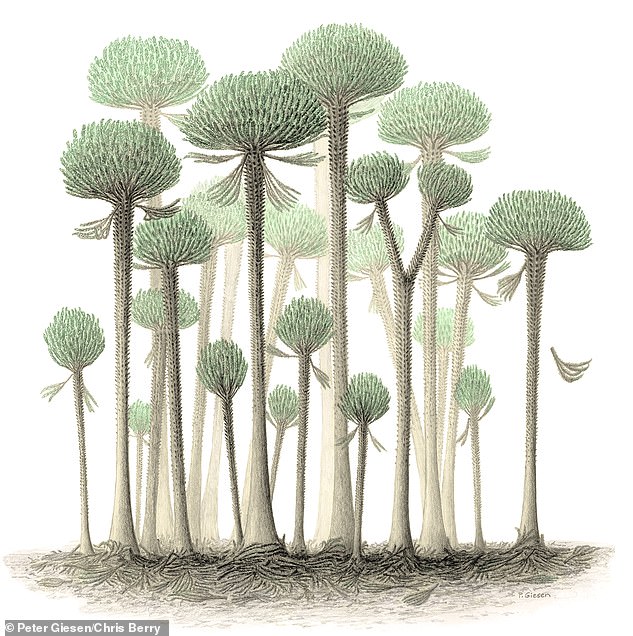

The fossil trees found in Somerset would have looked nothing like the forests found today in nearby Exmoor National Park. These trees, called Calamophyton, looked a bit like today’s palm trees, according to researchers (artist’s impression)
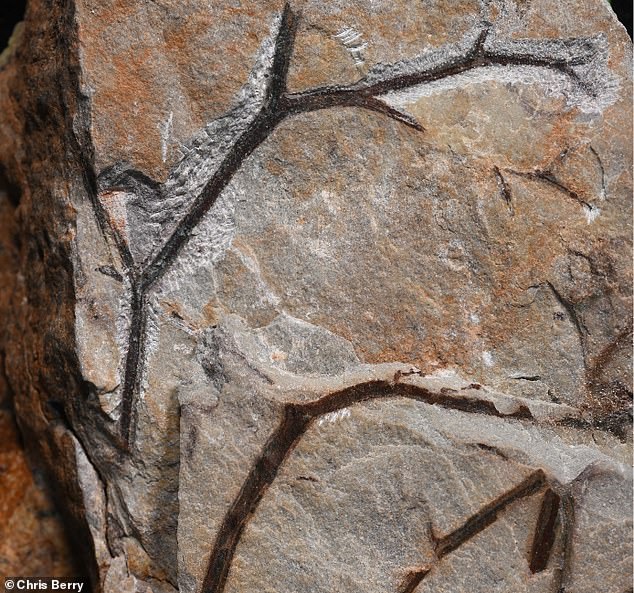

The fossil remains show the twigs (pictured) that fell to the ground and helped change the landscape of the Devonian period.
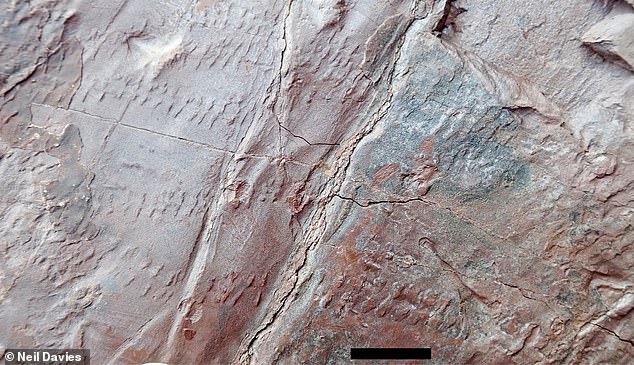

Fallen forest litter was home to some of the first invertebrates to venture onto land. This image shows the fossilized footprints of one of these first animals.
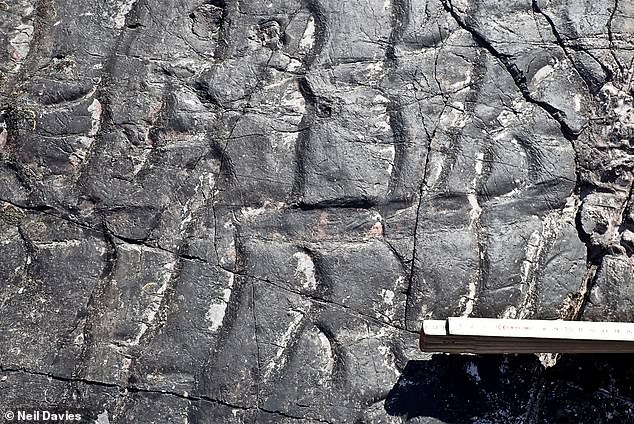

Researchers hope that by studying the forest remains they can understand how ancient forests changed the landscape around them.
According to Professor Davies, as well as providing a home to the first animals, this forest would also have been a powerful force in shaping the earth.
“The Devonian period fundamentally changed life on Earth,” he explained.
“It also changed the way water and land interacted with each other, as trees and other plants helped stabilize sediments through their root systems.”
At the time this forest was growing, the chunk of rock that now forms Culver Cliff, Selworthy Sand and Porlock Weir was not actually attached to England.
Instead, it was part of present-day Germany and Belgium, where other Devonian rocks can be found.
The terrain itself would have been a semi-arid plain, crisscrossed by small rivers gushing from the mountains to the northwest.
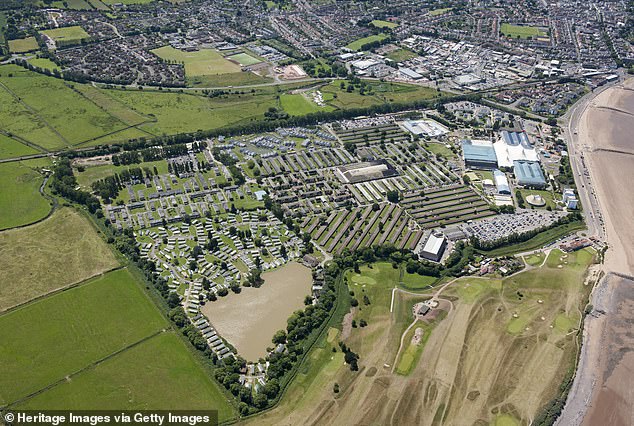

The areas near Minehead would once have been a semi-arid plain, crisscrossed by streams and stabilized by primeval forest. Today it is the site of a large Butlin resort (pictured)
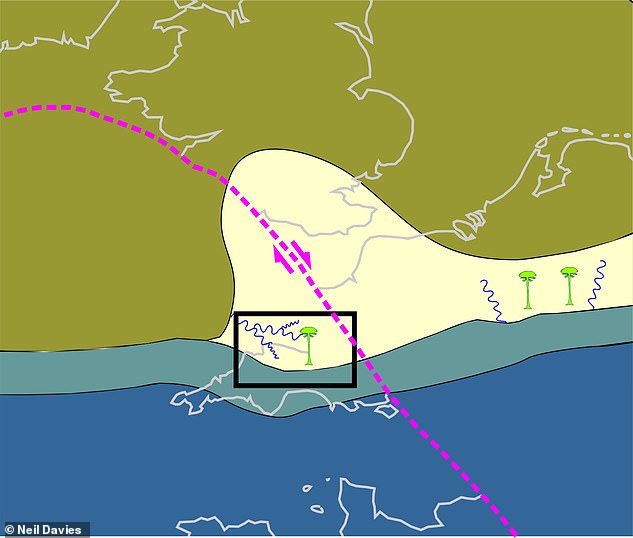

This map shows how the cliffs of Devon and Somerset (highlighted with a black box) were once part of the landmass that is now Germany and Belgium.
Although scientists know that trees played a role in shaping this ancient environment, until now there has not been an opportunity to study their impacts in such detail.
Study co-author Dr Christopher Berry, from Cardiff University, says it was surprising to see these fossil forests so close to home.
“The most revealing insight comes from seeing, for the first time, these trees in the positions where they grew,” he concluded.
“It is our first opportunity to directly observe the ecology of this type of early forest, interpret the environment in which the Calamophyton trees grew, and evaluate their impact on the sedimentary system.”

